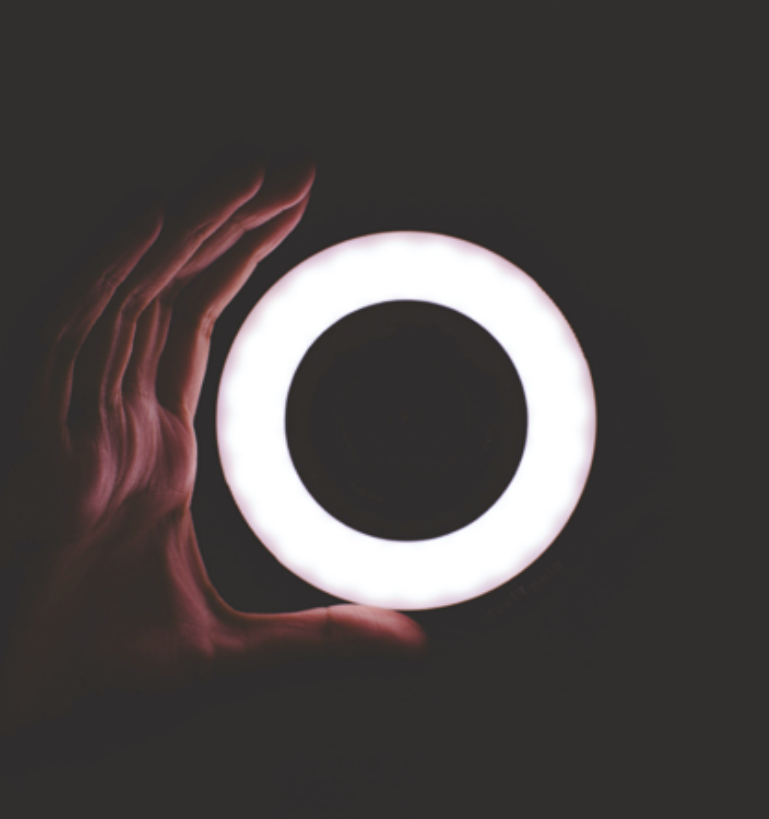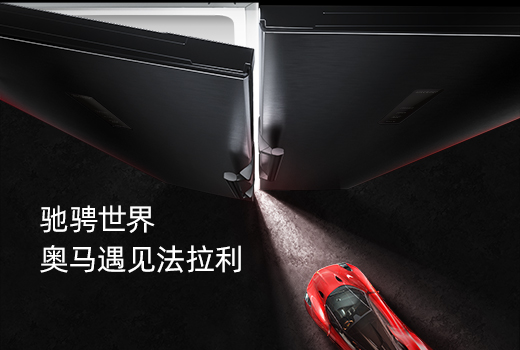此文章来自2023奥马设计期刊第12篇。
Smart LED lighting systems represent the future of domestic, and public, illumination. Integrated into smart buildings, and focussing on people, Human Centric Lighting is the new paradigm of space design.
未来的家居及公共场所照明离不开智能LED照明系统。人因照明(Human Centric Lighting)以智慧建筑为载体,强调以人为本,已然成为空间设计新范式。
Light governs the ticking of our inner clocks. The alternation of day and night sets the pace of our circadian rhythms and our physiological patterns of sleep/wakefulness. We are talking of natural light, of course, which can vary both in intensity and in colour in its dawn to dusk daily cycles. Although it has been overlooked for all too long, light has indeed an impact on people’s well- being. It can affect, in addition to our vision, our physical and emotional condition. Providing adequate, modular illumination in everyday life, in any situation and activity, is the task of future lighting systems. It is the “Human Centric Lighting” model: artificial illumination that is sustainable, smart and beneficial. For that matter, people’s well-being is, together with energy savings, one of the objectives of sustainable global development. Considering that we spend 90% of our time at home, at work or at school - i.e. indoors - we can appreciate the importance of this issue in terms of quality of life.
光线决定了人体生物钟的运作。昼夜交替设定了我们的生理节律和睡眠与觉醒的生理机制。从黎明到黄昏,在每日的不同时间点,自然光的强度和色彩均有差异。光线是影响人体健康的直接因素,但长期以来,人们一直忽视了这一点。(本文所探讨的光线均指自然光。)除了会影响视力,光线还会影响我们的身体和情绪状况。未来的照明系统必须在日常生活的所有场景中为人们提供充足的模块化照明。这便是“人因照明”模式:可持续、智能且有益的人工照明。人类健康与节约能源一样,是全球可持续发展目标之一。鉴于我们90%的时间是在家中、办公室或学校度过,即在室内度过,照明与生活质量息息相关。

LED化与智能照明
The technologies already employed in today’s lighting systems will facilitate the development of even smarter solutions in the future. These will be modular and more similar to natural light. In recent years, after the LEDification process- i.e. the systematic replacement of old light bulbs with LEDs - IoT technology is leading the way, with new solutions for a more effective control of domestic lighting systems, but also of entire buildings and communities. We are entering the era of smart lighting, integrated into a complex ecosystem of the most diverse smart functionalities that power the smart home/building/city. IoT (internet of Things) technology will strongly impact the lighting industry, turning the concept of “product” into that of “service”, from the moment lighting devices in a house will become part of an integrated platform managing data, functionalities and consumption in a perspective of optimisation and sustainability. A system whereby the simple remote on-and-off switching of appliances is just the tip of the iceberg. Through integrated sensors, the new generation “lightbulbs” will be able to monitor the living space, and collect data on temperature and air quality. Moreover, they will also be managing maintenance in a predictive and autonomous way, avoiding inconveniences and black-outs.
如今照明系统中的已有技术将推动未来照明方案朝着更智能化的方向发展。照明将呈现模块化,并且更接近自然光。近年来,随着LED化的兴起,LED开始大规模取代传统灯泡。为了更有效地控制家用、建筑和社区照明系统,物联网(IoT)技术成为了热门的解决方案。智能照明的时代即将到来,未来的照明系统将使用精密的生态系统整合众多智能化功能,从而为智慧家居、建筑及城市赋能。在IoT技术的影响下,“产品”转变为“服务”,照明行业发生巨变。家中的照明设备将被纳入一体化平台,从优化和可持续的角度管理数据、功能和能耗。远程开关电器的功能仅仅是其中的冰山一角。借助集成感应器,新一代“灯泡”可以监测生活空间,并收集温度及空气质量数据。此外,它们还将自动选择合适的时间执行保养,以避免故障给用户造成不便。

Outdoor light:
室外光线:
Day/sunny = 100.000 lux
白天/晴天 = 100,000 lux
Day/cloudy = 10.000 lux
白天/阴天 = 10,000 lux
Indoor light:
室内光线:
Office = 500 lux
办公室 = 500 lux
lux is the international unit of measurement for light.
lux是光的国际计量单位。
(source: Lightingeurope.org)
(来源:Lightingeurope.org)
Led lighting in the spotlight
聚焦LED照明
Today, this technology is entering the mainstream due to the many benefits it can provide. Let’s learn about it together.
如今,LED技术已凭借其显著优势跻身主流。让我们共同走近该技术。

环境意识、对能源成本的重视,以及对美学的潜在关注,引发了人们对冰箱内部照明的重新思考。直至不久前,冰箱照明还在使用白炽灯泡,根据灯泡尺寸,其吸收功率为10瓦至25瓦不等。
As a rule, there was a single light point positioned in a decentralized area - usually at the top on the right. This light was not very bright and consequently had limited diffusion or was even obstructed by food in the immediate vicinity. It could therefore be difficult to see how much and what food there was, causing avoidable waste.
白炽灯照明点往往设置在冰箱内部的某个角落,最常见的是右上角。这种光线亮度较低、漫射性有限,容易被附近的食物遮挡。因此,用户可能难以看清冰箱内食物的种类和数量,从而造成不必要的浪费。
Today this lighting system has been replaced in almost all refrigerators with LED technology.
如今,几乎所有冰箱都采用LED技术代替了白炽灯照明。
The advantages? Essentially three:
LED具有以下三大优势:
1
Greater efficiency in both energy and duration. The average life of these lamps is about 50 thousand hours, but for some models it is up to 100 thousand hours, with a constant luminosity output of 70%.
能耗更低、更耐用。在恒定亮度输出为70%的情况下,LED的平均寿命约为5万小时,某些型号甚至可达10万小时。
2
This lighting system does not create heat, therefore it does not affect the internal temperature of the refrigerator compartment. The cold light which is up to four times brighter and particularly clear allows optimal and uniform lighting, so everything inside is visible, especially in the corners and on the bottom of the shelves.
LED照明系统不发热,因此不会影响冰箱内部的温度。LED冷光的亮度比白炽灯高四倍,照明效果清晰均匀,可使冰箱内部一览无余,哪怕是角落和层架底部。
3
Given its small size, positioning inside the refrigerator compartment is very flexible. Depending on the model, it is used centrally as a ceiling light in the upper part of the interior, as a column on the back wall for its entire height or vertically on both sides. The most recent solutions are the use of LED rows integrated on the upper side and the side wall of each shelf.
由于体积较小,LED在冰箱内的安装位置十分灵活。根据冰箱型号,可作为吸顶灯安装在冰箱上部,也可以在冰箱内部背板上由上至下排成一列,或垂直排列于背板两侧。最新的方案是将LED成排安装在每个层架的上方和侧壁。
Let’s add a fourth point, less functional and more associated with the aesthetics of the product:
其实LED还有第四大优势,但主要与产品美学相关,而非产品功能:
4
An indirect lighting system such as LED can visually enhance the materials used. And if the intensity of the lighting slowly increases once the door is opened, the effect is even greater.
LED间接照明系统可从视觉上增强材料质感。如果随着冰箱门打开而缓缓增加照明强度,则视觉效果更佳。
However, perhaps the most innovative solution for seeing what is inside a refrigerator is something else again: the transparent front panel with light activation that allows you to see inside without having to open the refrigerator compartment. This reduces the frequency of door opening, and therefore of energy expenditure, and keeps the internal temperature more uniform.
此外,为了帮助用户看清冰箱内部,目前已诞生开创性的发光透明面板,无需打开冰箱门,内部物品即可一览无遗。这有助于减少开门频率,进而降低能耗,并使冰箱内部温度恒定。
版权归广东奥马冰箱有限公司所有,转载请注明出处。





























